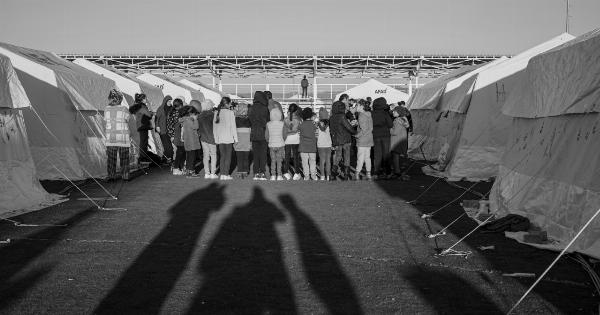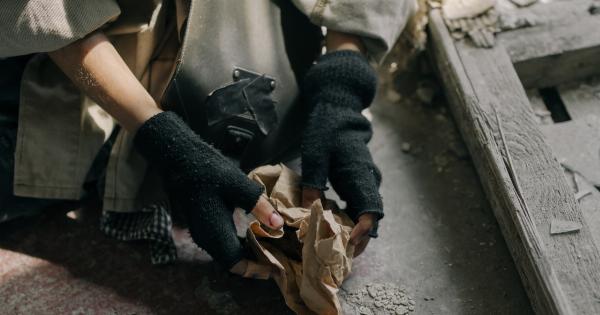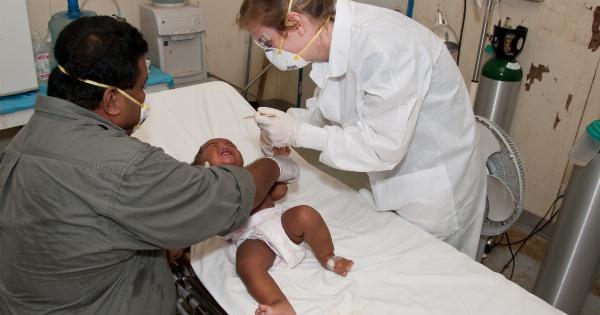Choking is a scary event that can happen to anyone, but it’s especially dangerous for children. Children have smaller airways and are more likely to choke on small objects.
If your child is choking, it’s important to know what to do to help them. In this article, we’ll go over the steps you can take to respond to choking and save your little one’s life.
Recognize the Signs of Choking
The first step in responding to choking is recognizing the signs. If your child is choking, they may:.
- Have difficulty breathing or not be able to breathe at all
- Have a cough that sounds like they are trying to clear their throat
- Make a high-pitched sound when they inhale
- Gasp for air
- Clutch their throat or chest
- Turn blue or gray in the face
If you notice any of these signs, act quickly to help your child. Time is crucial in a choking emergency.
Perform the Heimlich Maneuver
The Heimlich maneuver is a technique that can remove an obstruction from your child’s throat. Here’s how to do it:.
- Stand behind your child and wrap your arms around their waist.
- Make a fist with one hand and place it just above their belly button.
- Grasp your fist with the other hand and press in and up with quick, upward thrusts.
- Repeat until the object is dislodged or the child can breathe again.
If your child is a baby, you will need to perform the Heimlich maneuver slightly differently. Here’s how:.
- Place your baby face down on your forearm, with their head lower than their chest.
- Support their head and neck with your hand.
- Using the heel of your other hand, give up to five back blows between your baby’s shoulder blades.
- If the object still hasn’t come out, turn your baby onto their back and give up to five chest thrusts.
- Repeat until the obstruction is removed or your baby can breathe again.
If the Heimlich maneuver isn’t working, or your child becomes unconscious, call 911 and begin CPR.
Perform CPR
If your child is unconscious, you will need to perform CPR. Here’s how to do it:.
- Lay your child on their back on a firm surface.
- Place the heel of your hand on the breastbone at the center of their chest. Place your other hand on top of the first hand.
- Using your body weight, press straight down on their chest about 2 inches (5 centimeters).
- Do this at a rate of about 100 compressions a minute until help arrives.
- If your child isn’t breathing, give rescue breaths. Tilt their head back and lift their chin. Pinch their nose shut and give a breath that gives their chest a visible rise.
- Repeat this cycle of compressions and breaths until help arrives or your child starts breathing again.
It’s important to learn CPR before an emergency happens. Check your local hospital or community center for classes. CPR can save lives.
Preventing Choking
Preventing choking is the best way to avoid an emergency. Here are some tips to keep your child safe:.
- Make sure your child sits down and chews their food well. Don’t let them run or play with food in their mouth.
- Cut food into small pieces that are easy to chew and swallow. Avoid round, hard foods like hot dogs and grapes.
- Keep small objects, like coins and toys, out of reach of your child.
- Teach your child to avoid putting objects in their mouth.
- Never leave your child unattended while they are eating or playing with small objects.
- Learn CPR and keep emergency telephone numbers handy.
Conclusion
Choking is a serious emergency that can happen to anyone, but it’s especially dangerous for children. If your child is choking, act quickly to dislodge the object or perform CPR. Prevention is the best way to avoid choking.
Always supervise your child while they are eating or playing with small objects, and teach them to avoid putting objects in their mouth. By taking these steps, you can keep your little one safe from choking emergencies.






























